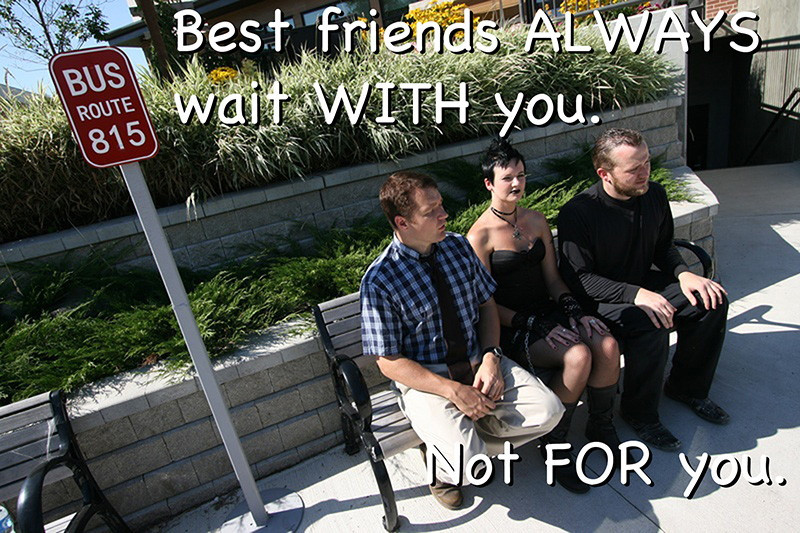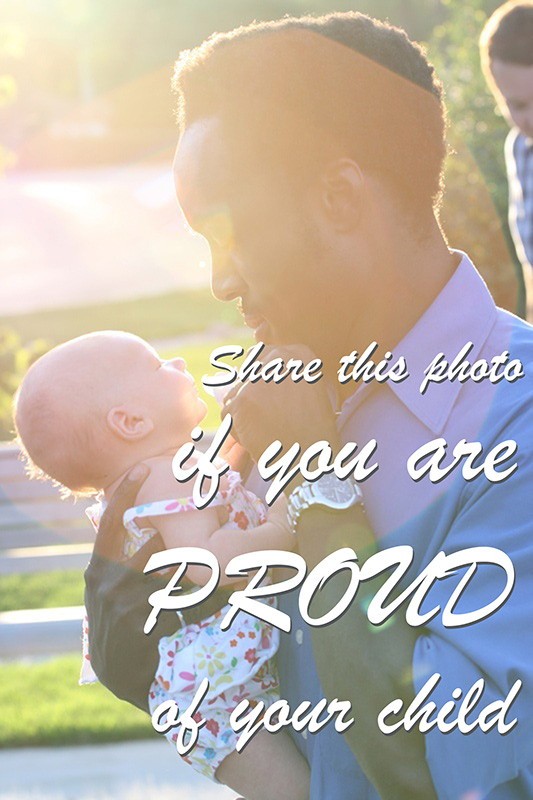Profiles, Pics, and Platitudes
An analysis of social media’s obsession with banal sayings in image form
You find yourself on a beautiful beach at sunset. Off in the distance, the conjoined silhouettes of two figures holding hands wander in the surf as gulls swirl overhead. Gradually, you become aware of a distinct orange tint to everything you see; stranger still, lines and specks like those found in old-timey photographs pervade your vision.
As you begin to rub your eyes and contemplate a visit to the nearest emergency room, your confusion is multiplied tenfold by the sudden appearance of a chunk of italicised typography (“Is that… Yes - Helvetica!”) superimposed across your perspective.
“Look out for each other when no one else does,” the otherworldly message reads.
Your mind reels as it attempts to make sense of these increasingly bizarre happenings.
“Where is this, and what the hell am I on?” you cry.
Relax.
Where you are is smack-dab in the centre of middle-class, western social media culture in the year 2013 - and all you’re on is the Internet.
Okay, so that’s still mildly frightening, and to be honest I’m just as confused as the next person. But maybe we can somehow get to the bottom of all this.
If you’ve made use of Facebook, Instagram, Pinterest, Tumblr, or any other social networking platform that facilitates image-sharing, it’s almost certain you’ve been exposed to innumerable pictures like the one I’ve described here as they make their rounds with thousands of “likes,” “favourites” and “shares” propelling them from screen to screen.
The visual components of such images vary widely while adhering to an unspoken sensibility - think worn-out Converse sneakers, people kissing, and precariously-stacked coffee cups, always complete with resolution-ravaging photo filters, of course - but these are just a literal and figurative backdrop to the real phenomenon that is the accompanying text.
Put aside such cousin-trends as “If you remember this, something, something you’re a 90s kid!,” and “That moment when [relatable experience]” for the time being. What I’m specifically talking about here are not these, but the shareable image-and-text combos that are ostensibly intended as aphoristic ‘wisdom’-delivery capsules.
A quick look at Instagram’s “Explore” tab - a good gauge of what types of content are most popular with the service’s users - yielded the following instructive examples (respective visual components in parentheses):
“You only get out, [sic] what you put into it” (flower)
“Don’t make permanent decisions on temporary emotions” (beach, subject with back towards camera)
“The best is yet to come” (urban sunset)
What all of these phrases have in common is that each seemingly attempts to produce a maxim by asserting an implicitly universal truth in as few words as possible. None of them, however, acknowledge the conditional natures of their respective claims, instead opting to cash in concision for dogmatism and simplicity.
It’s clear that the creators of these images were going for profundity, but really all we’re left with are nice sentiments that, like those listed above, are revealed to be logically flawed upon even the slightest scrutiny, or else such obvious truisms that their very utterances are patronizing. Rather than aphorisms, they are little more than banal platitudes: bite-sized packets of effectively meaningless observations masquerading as sagely advice.
There’s nothing new about the popularity of banal platitudes in general. After all, by definition they’re quick-and-easy feel-good fixes for those times when we’re too lazy to cognitively process new situations, so there’s no reason they wouldn’t be popular. The only thing that’s changed in terms of our cultural relationship to these types of sayings is how they’re presented.
Sure, the current epoch of Internet usage has opened up new avenues for sharing longer-form communications, but by and large social networking platforms and the devices they’re increasingly accessed on are structured so as to place value on the short-and-sweet, above all else.
Combine this pressure to remain concise with a potential speed of viewing and sharing only limited by a user’s indifference towards Carpal Tunnel Syndrome, and you’ve got what amounts to the perfect environment for a plati-pocalypse (not to be confused with any term used to describe the overthrow of humans by platypuses, of course).
Platitudes as memes
To describe this unnamed trend we’re discussing here as an example of a “meme” might sound inaccurate at a glance. After all, there are no fist-pumping babies, radial lines, or “Good Guy Gregs” in sight. But let’s put aside the colloquial meaning of the term for a moment.
Evolutionary biologist Richard Dawkins first coined the term in his 1976 work The Selfish Gene simply to describe (I’ll borrow the Merriam-Webster definition here) “an idea, behavior, or style that spreads from person to person within a culture.”
The word has since been bastardized in the context of Internet culture so that it specifically refers to the strictly formatted, picture-and-text-based running jokes especially popular on such sites as Reddit and 4chan (the proper name for this is actually “image macros”) such as the aforementioned “Success Kid”.
While ‘Insta-platitudes’ don’t fit this colloquial definition of what constitutes a meme, they are in many ways a perfect example of the original concept manifested in the online age. To be sure, one could refer to virtually any cultural text as a meme in the Dawkinsian sense (including image macros); but the fact that Insta-platitudes tend to adhere to a definable framework of aesthetic and structural limitations, and spread from subject to subject as efficiently as they do, make them something of a textbook case.
The important question, then, becomes one of what, exactly, is being communicated by the Insta-platitude meme. What cultural values, ideas and practises are embedded in that sepia tone picture of Marilyn Monroe with the words “Living well is the best revenge” plastered across her exuberant, laughing face and the 20,000 upturned thumbs beneath it?
Deconstructing the Insta-platitude
Let’s for the sake of argument maintain that the differing content found in each unique iteration of the meme in question is merely superficial. This really isn’t much of a stretch, after all: if the verbal component of one such photo confronts the viewer with a radical or unconventional statement, then it’s not a part of what we’re discussing here in the first place. On the contrary, the Insta-platitude - like any other form of platitude - is fundamentally agreeable. It is desirable for its power to circumvent reflection rather than provoke it. And this is why the interchangeable content of the Insta-platitude really is inconsequential: whether I view this one or that, all I’m doing is passively absorbing a trite sentiment I’m already more than familiar with in some other form.
Despite the actual banality of the Insta-platitude, for it to be deemed as such it must still purport to be something more meaningful. This is where the visual component of the meme does most of its work. We tend to associate images of sunsets, hand-holding and so on with timeless, relatable themes. Whether the meme’s author wishes to evoke melancholy, romance, optimism or nostalgia, there’s an appropriate signifier just a Google Image search away.
The corresponding means of communication (social media) not only streamlines the ease with which the content creator can cheaply project a false sense of profundity onto their text using visual language, but also allows viewers to directly attach such texts to their online persona. Whereas a spoken platitude is most commonly used to delay critical thinking or fill conversational gaps in complex or difficult circumstances (“Hey, everything happens for a reason”), the Insta-platitude is an endlessly duplicable badge that can be sewn onto one’s identity with a simple mouse-click. Unlike the spoken platitude, which is reactive in nature, the Insta-platitude is decidedly proactive - it’s expressed entirely for the benefit of the sharer.
This appropriation of platitudes as identity-building material isn’t strictly limited to the virtual world, either. The “Keep Calm and Carry On” meme, which over the past decade has found its way onto every commercial product imaginable, is something of a precursor to the social media-borne phenomenon at hand. Abstracted from its original context and meaning (the design comes from an unissued WWII-era propaganda campaign by the British government) the phrase has been so thoroughly trivialized by its mass commodification that to deny it the status of platitude today would be hopeless. Yet, despite this, many consumers remain eager to purchase notebooks, t-shirts, and coffee mugs sporting the image with the conscious-or-not aim of tethering their public personae to its various associations.
Just as with that Teenage Mutant Ninja Turtles lunchbox of yesteryear, there seems to be something appealing about any object that simultaneously provides its owner with a sense of individuality while also linking them to a pre-existing and potentially ubiquitous cultural anchor. Despite its lack of physical presence, the Insta-platitude meme adheres to a similar logic, although instead of expressing a collective affinity for whatever’s rad, it seems to indicate that perceived characteristics of thoughtfulness and wisdom currently happen to carry cultural capital within the demographic circulating its many iterations.
In other words, aside from the particularly unfortunate irony inherent in attempting to evoke profundity through the repetition of phrases that are by definition depthless, we’ve seen this all before.
If history’s any indication of what’s to come, all that remains is for capital interests to put two and two together and start pumping out tank tops emblazoned with de-contextualized Audrey Hepburn quotes and close-up pictures of people crying.
Oh wait. Shit.
Carson Hammond studies English Literature at the University of Winnipeg. If you’ve read this and earnestly enjoy the types of images he’s been harping on, and as a result are offended, please know that what’s done is done. You have to move on, what hasn’t killed you has only made you stronger and haters gonna hate. Just remember: all you need to be is yourself.
Published in Volume 67, Number 26 of The Uniter (May 29, 2013)








